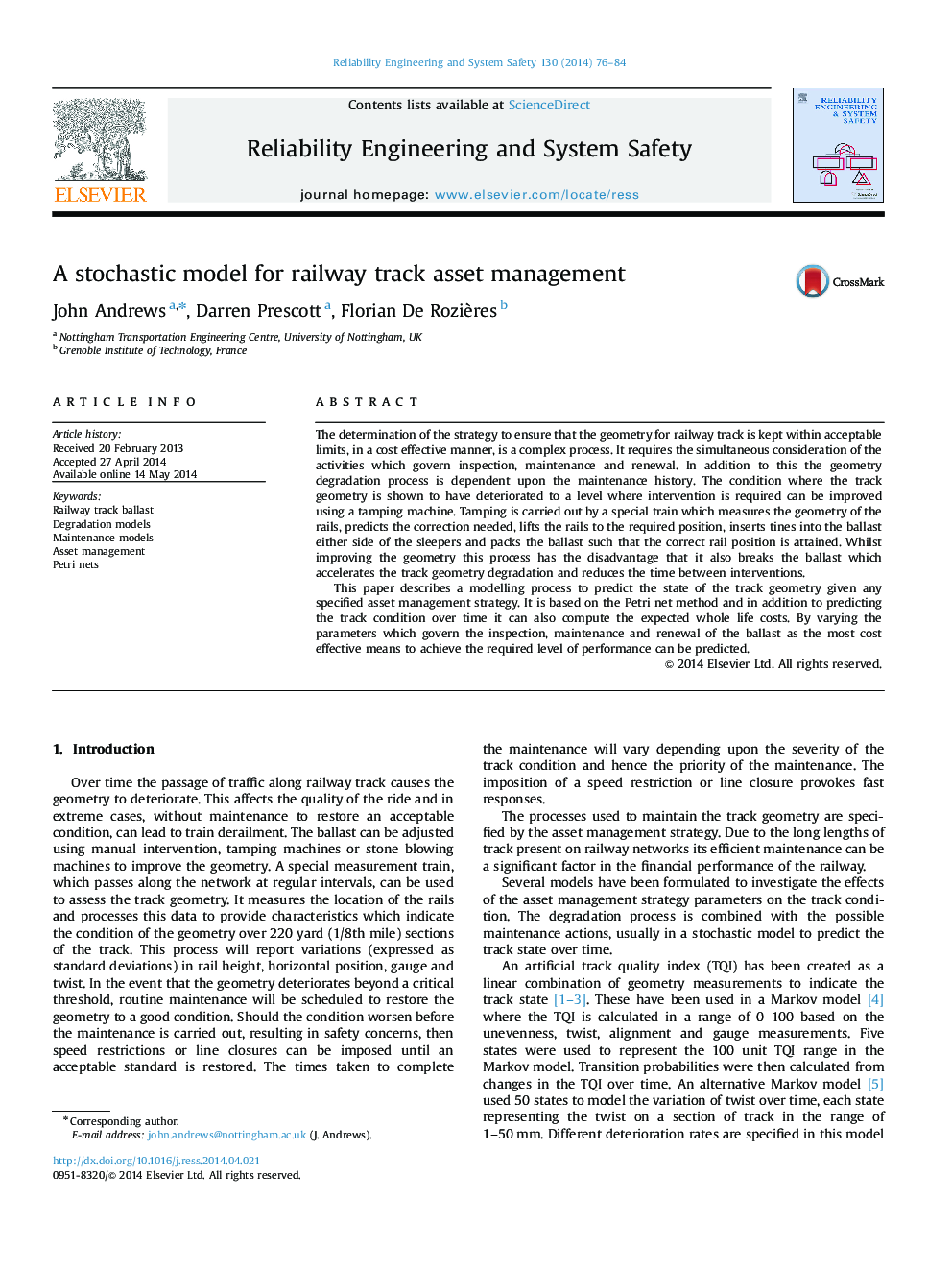| Article ID | Journal | Published Year | Pages | File Type |
|---|---|---|---|---|
| 807923 | Reliability Engineering & System Safety | 2014 | 9 Pages |
The determination of the strategy to ensure that the geometry for railway track is kept within acceptable limits, in a cost effective manner, is a complex process. It requires the simultaneous consideration of the activities which govern inspection, maintenance and renewal. In addition to this the geometry degradation process is dependent upon the maintenance history. The condition where the track geometry is shown to have deteriorated to a level where intervention is required can be improved using a tamping machine. Tamping is carried out by a special train which measures the geometry of the rails, predicts the correction needed, lifts the rails to the required position, inserts tines into the ballast either side of the sleepers and packs the ballast such that the correct rail position is attained. Whilst improving the geometry this process has the disadvantage that it also breaks the ballast which accelerates the track geometry degradation and reduces the time between interventions.This paper describes a modelling process to predict the state of the track geometry given any specified asset management strategy. It is based on the Petri net method and in addition to predicting the track condition over time it can also compute the expected whole life costs. By varying the parameters which govern the inspection, maintenance and renewal of the ballast as the most cost effective means to achieve the required level of performance can be predicted.
